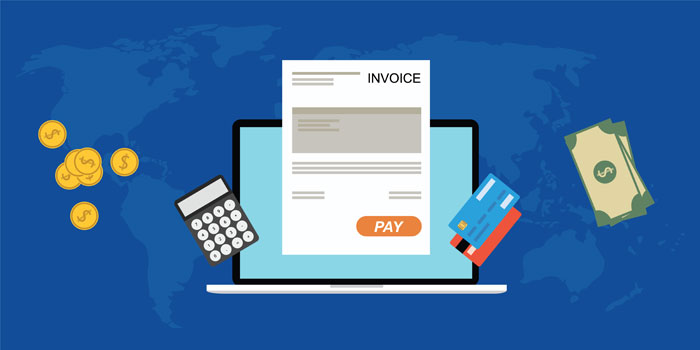The Most Important Invoice Tips for Your Organizing Business
This page may contain links to Amazon.com or other sites from which I may receive commission on purchases you make after clicking on such links. Read my full Disclosure Policy

Although going into business for yourself can be a dream, it also brings with it a lot of stressful aspects. One of these surrounds having to take care of your own finances, which for many new or even experienced business owners can seem overwhelming.
This can be especially frustrating for organizers whose very business is about finding ways to sort through things logically and efficiently. This includes creating all kinds of invoices, whether they’re standard, proforma, commercial or electronic, in a professional way.
In order to help out, we’ll look at some of the best invoicing tips we’ve come across to help organizing business owners get a grip on their finances.
Create a strategic policy
One of the most important ways you can avoid getting disorganized in your invoices (and thereby being paid late) is by preparing a policy in advance. In your policy, you should be clear and general enough to cover what you and your client’s expectations should be.
You should go over the following:
- whether you will accept payment upfront
- how much time will be allowed for payment
- whether applicable late fees will be a specific amount or a percentage
- what types of payments you’ll accept (such as cash, bank transfer, debit, etc.)
When you have these conditions set out clearly, you’ll be able to have a point of reference and hold yourself and your clients accountable.
Create a quote beforehand
While your policy covers general matters, you’ll still need to be clear about the specific expectations that your client has. You should know how much time you have to deliver a specific task and what the extent of the service is in detail.
The answers to these questions will help you to avoid not only possible confusion or surprises for your client. It will also help protect you against what’s known as scope creep—when the scope of a project gradually expands due to improperly defined expectations.
Get your invoices out quickly
One of the most important things for your organizing business is to get your invoices out as soon as possible.
This can be quite difficult, especially when many business owners have so many other responsibilities. Once they finish with their main tasks, they may be too tired to immediately work on the next task. Although that’s understandable, it still is not recommended.
Right after the service has been completed, you should work on creating your invoice to be sent out as soon as possible.
This will help you to get into the accounts payable cycle. However, if you procrastinate on sending out your invoices, you’ll potentially miss out and end up getting paid much later.
Be clear in your invoices
When you create your actual invoices, be very direct, clear and uncomplicated in your descriptions. This means that you should limit the job description to what, where and when.
Additionally, you should be sure to include all the necessary details in your invoice. This includes your bank account or payment information, any ID or specific numbers, and all details that will avoid having your invoice delayed due to confusion.
Make sure to follow up on late-payers
Perhaps the most important invoice tip is to be strict in following up on your clients who are late to pay. This may be uncomfortable to many organizing business owners, especially since you wouldn’t want to anger or alienate your long-term customers.
However, there should be no fear or shame in getting payment for work already completed. The simple possibility is that your client may have been busy and forgotten about your invoice. In that case, it is crucial to send a polite email reminder to your client in order to ask for updates about your invoice.
This will help you not only get paid faster, but also present yourself as more professional (and less of a pushover). In the long run, this is good for your customer relationship and your business in general.
With these invoicing tips, you should see marked improvements in not only your invoicing processes, but also in the speed that your invoices will get paid.
Image © ribkhan / depositphotos




Great advice, Janet. I find it is easier to bring the invoice with me to clients. Nowadays, my clients prefer I email the bill, so I set up the invoice at home and then I know the amount. They pay me after the job is completed and they I email them a paid invoice. It works nicely, and I don’t have to print out paper, and my client doesn’t need to find a place to store the physical paper.
I love my invoicing app, because I can issue invoices right from my phone. I rarely see my clients in person, but it’s nice to have the option!
What invoice app do you use, Janet? I’m curious, especially because you said you “love” it.
I’ve been using Zoho Invoice since 2013. There is a yearly fee, but it’s well worth it.
I typically either collect in advance (for packages) or expect payment upon receipt of the invoice, while I’m standing there. One good tip I received from a veteran was to take care of the transactional details at the beginning of a session. That way, you can work up until the end and not have to worry about the payment process extending too far beyond the end of your billable time.
That’s very smart. It also makes it easier to raise the subject if you are going to go over.
The more virtual my business becomes, the more invoices I send (as opposed to simply providing a receipt for in-person payment). Thanks for the tips!
Yes, it’s very different conducting business online, isn’t it? I’m glad the post was helpful.